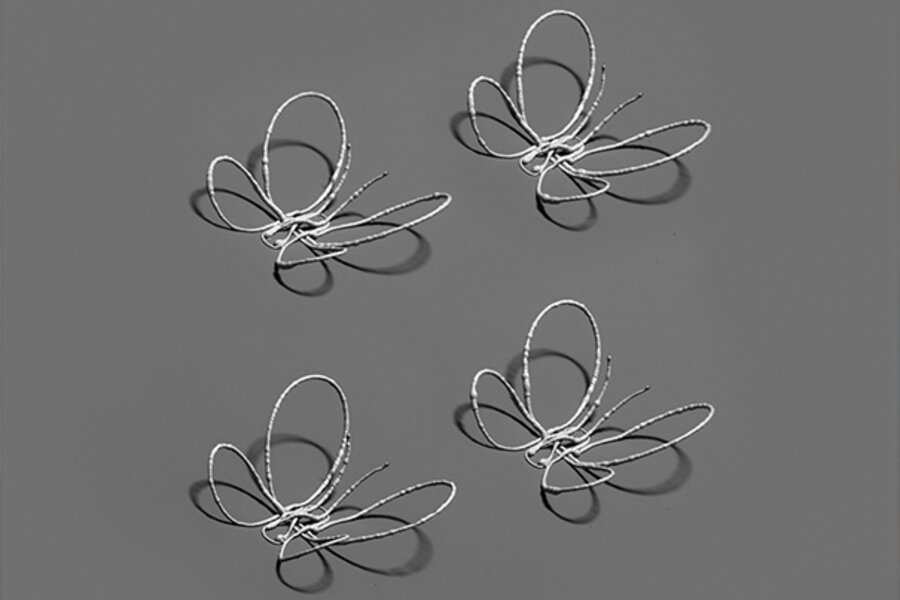How a new 3-D printer can create electronics in mid-air
Loading...
Hair-thin electronics can now be built mid-air, thanks to a new 3-D printer.
Developed by a team of researchers from Harvard's John A. Paulson School of Engineering and Applied Sciences (SEAS) and the university's Wyss Institute for Biologically Inspired Engineering, "laser-assisted direct ink writing" can structure highly conductive metal into intricate designs.
"Rather than printing large scale, metal structures, we are pushing this down to the micro level – to 1 percent the width of a human hair," Dr. Mark Skylar-Scott, a postdoctoral fellow at the Wyss Insitute and lead author of the study, tells The Christian Science Monitor. "We can make tiny, conductive structures and this is important in the electronic industry."
As customized electronics develop, producers need new 3-D production methods to help create a variety of devices "beyond those that are flat and rigid," the authors note in their paper, published Monday in the journal Proceedings of the National Academy of Sciences. The demand for customized architecture is increasing as consumers look to buy flexible and wearable electronics equipped with antennas and sensors.
Their 3-D printing development will be especially useful for electrical engineers, says Dr. Skylar-Scott, because it is rare for printers to build a model whose conductivity equals that of silver.
Also, this technology allows engineers to produce wires and other useful components "right onto their devices" in a cost-efficient, space-efficient manner, as the Wyss Institute notes in a press release. Before this printer, the necessary laser heating would have damaged the other technology, but now engineers can print "on-the-fly," directly onto a circuit board.
Traditional 3-D printers slowly build objects by laying down successive layers of a material – typically plastic – but this new method involves "laser-assisted direct ink writing." Using a specific amount of energy, a programmed laser solidifies the ink, which is composed of silver nanoparticles, by solidifying it in milliseconds.
"The result is that the method can produce not only sweeping curves and spirals but also sharp angular turns and directional changes written into thin air with silver inks, opening up near limitless new potential applications in electronic and biomedical devices that rely on customized metallic architectures," according to the Institute.
This new ink-writing printer allows structures to be made quickly and durably: Not only do the freeform creations harden immediately, but they also can be made with durable metal, as well as the typical 3-D printing resource of plastic filament.
"The material is like toothpaste but made of silver. Toothpaste would be too floppy to hold its shape, but if you solidify it, you could hold it in midair," explains Skylar-Scott. "We're no longer thinking about [3-D printing] as a layer by layer process. We still have gravity to fight, but now we can leave the substrate and go into free space."








